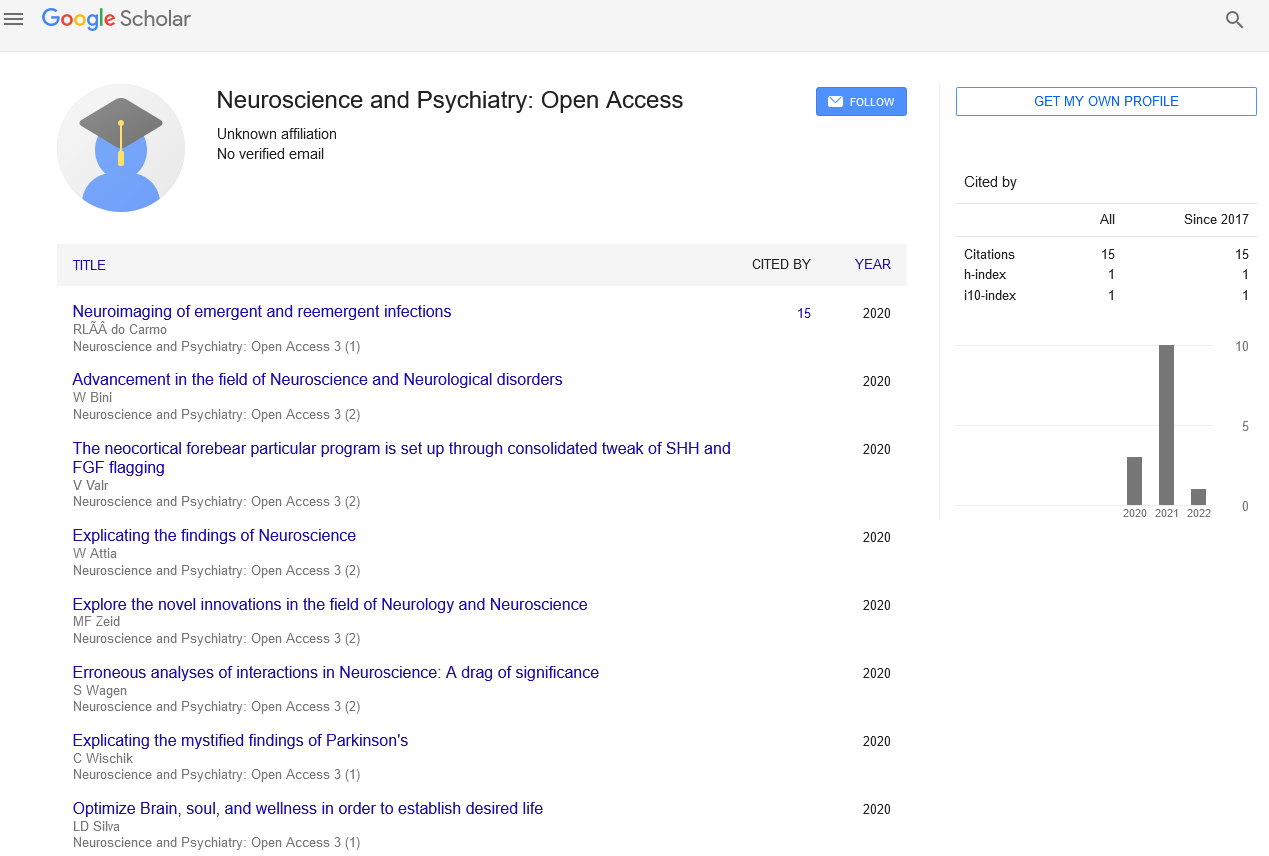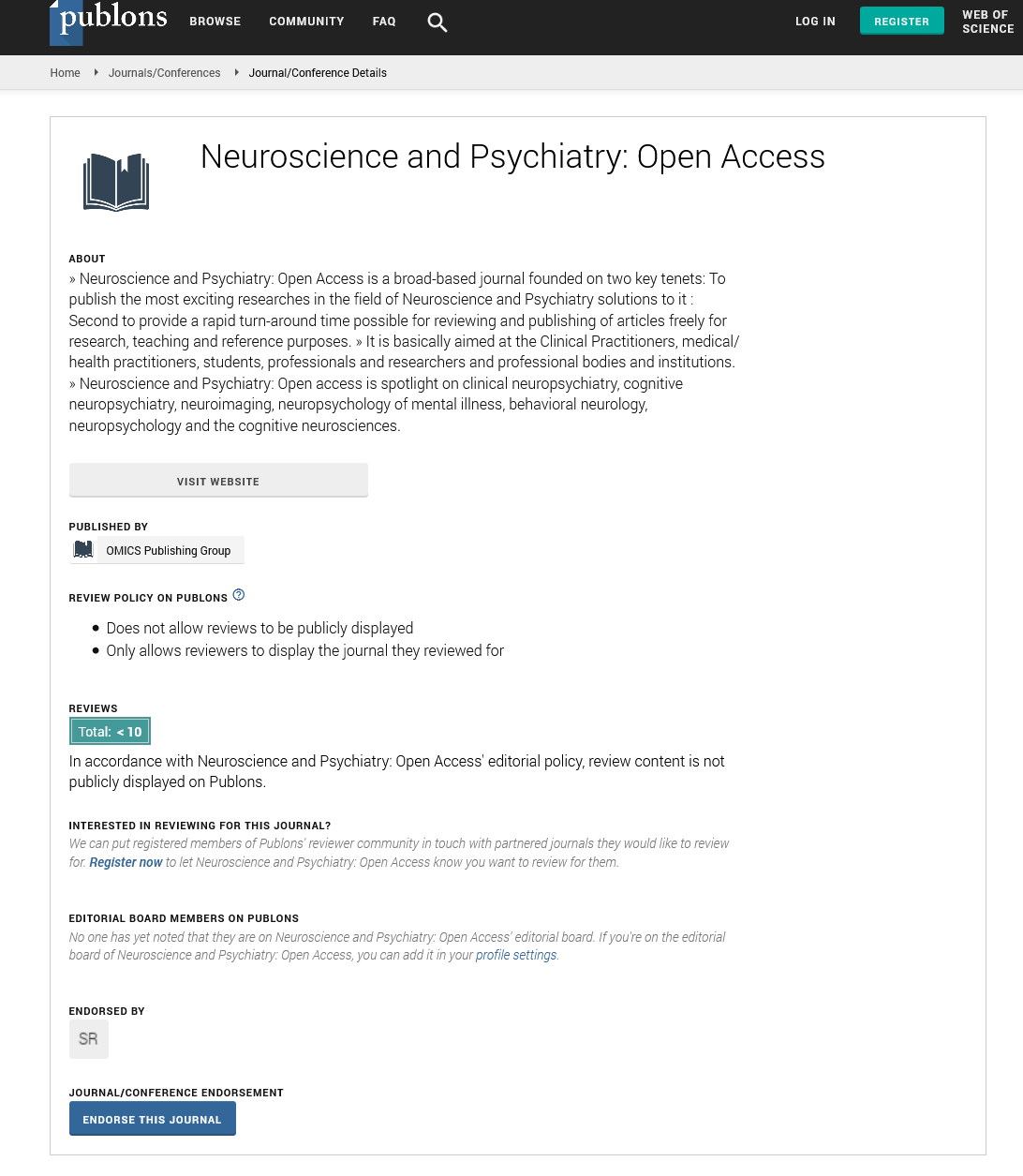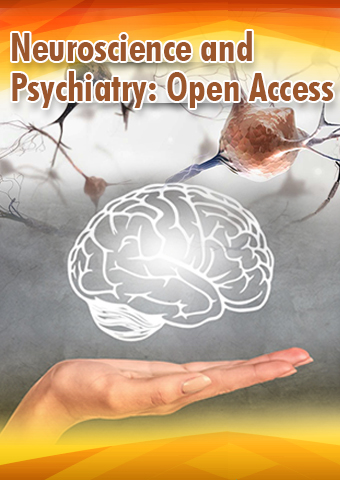Perspective - Neuroscience and Psychiatry: Open Access (2024) Volume 7, Issue 2
Unveiling the Intricacies of Synaptic Transmission: A Gateway to Understanding Brain Function
- Corresponding Author:
- Jeffrey Browndyke
Department of Neurology and Neurological Sciences, Stanford University, Stanford, USA
E-mail: j.brow23@duke.edu
Received: 13-02-2024, Manuscript No. NPOA-24-128846; Editor assigned: 16-02-2024, PreQC No. NPOA-24-128846 (PQ); Reviewed: 01-03-2024, QC No. NPOA-24-128846; Revised: 12-03-2024, Manuscript No. NPOA-24-128846 (R); Published: 19-03-2024, DOI: 10.47532/npoa.2024.7(2).197-198
Introduction
Synaptic transmission is a fundamental process underlying communication between neurons in the brain, playing a pivotal role in various cognitive functions, behaviors, and physiological processes. It forms the basis of neural circuits, enabling the transmission of information across the intricate network of the nervous system. Understanding the mechanisms and dynamics of synaptic transmission is crucial for unraveling the mysteries of brain function and dysfunction. In this article, we delve into the intricate world of synaptic transmission, exploring its mechanisms, regulation, and significance in shaping neural activity and behavior.
Description
At the core of synaptic transmission lies the synapse, the junction between two neurons or between a neuron and its target cell. Synapses come in various forms, including excitatory and inhibitory synapses, each with distinct roles in modulating neural activity. At excitatory synapses, neurotransmitters such as glutamate are released from the presynaptic neuron, binding to receptors on the postsynaptic membrane and triggering depolarization, thus promoting the generation of action potentials. Conversely, inhibitory synapses utilize neurotransmitters like GABA to hyperpolarize the postsynaptic membrane, dampening neuronal activity and preventing the generation of action potentials. The balance between excitatory and inhibitory inputs is crucial for maintaining the proper functioning of neural circuits and orchestrating complex behaviors.
Mechanisms of synaptic transmission
The process of synaptic transmission can be delineated into several key steps, each orchestrated with precision to ensure efficient communication between neurons.
• Neurotransmitter release: Upon the arrival of an action potential at the presynaptic terminal, voltage-gated calcium channels open, leading to an influx of calcium ions. This triggers the fusion of synaptic vesicles with the presynaptic membrane, releasing neurotransmitters into the synaptic cleft.
• Neurotransmitter binding: Neurotransmitters diffuse across the synaptic cleft and bind to specific receptors on the postsynaptic membrane. This binding event elicits a conformational change in the receptor, initiating downstream signaling cascades within the postsynaptic neuron.
• Post-synaptic response: The activation of post-synaptic receptors leads to changes in membrane potential, either depolarizing or hyperpolarizing the postsynaptic neuron. This modulation of membrane potential determines whether an action potential is generated and propagates along the neuron.
• Neurotransmitter clearance: Following neurotransmitter binding, various mechanisms ensure the timely clearance of neurotransmitters from the synaptic cleft to terminate signaling. These mechanisms include enzymatic degradation, reuptake by transporters, and diffusion away from the synapse.
Regulation of synaptic transmission
Synaptic transmission is subject to tight regulation, allowing for precise control of neuronal communication and synaptic plasticity.
• Pre-synaptic modulation: The strength of synaptic transmission can be modulated pre-synaptically through mechanisms such as changes in neurotransmitter release probability or alterations in the number and function of pre-synaptic receptors. These regulatory mechanisms allow for dynamic adjustments in synaptic efficacy in response to changing environmental cues or neuronal activity patterns.
• Post-synaptic modulation: Post-synaptic receptors and signaling pathways play a crucial role in regulating synaptic transmission. Modulation of receptor properties, such as receptor phosphorylation or subunit composition, can profoundly impact synaptic strength and neuronal excitability. Additionally, intracellular signaling cascades triggered by neurotransmitter binding can lead to changes in gene expression, ultimately influencing synaptic function and neuronal connectivity.
Significance of synaptic transmission
Synaptic transmission is indispensable for a myriad of brain functions, ranging from basic sensory processing to complex cognitive processes.
• Learning and memory: Synaptic plasticity, the ability of synapses to undergo long-lasting changes in response to activity, forms the cellular basis of learning and memory. Processes such as Long-Term Potentiation (LTP) and Long-Term Depression (LTD) sculpt synaptic connections, strengthening or weakening synaptic efficacy to encode and store information.
• Motor control: Synaptic transmission within motor circuits coordinates muscle contraction and movement, enabling precise control of motor behaviors. Dysfunction in synaptic transmission within these circuits can lead to movement disorders such as Parkinson’s disease or Huntington’s disease.
• Emotional regulation: Synaptic transmission within limbic circuits regulates emotional processing and mood states. Dysregulation of synaptic transmission in these circuits is implicated in psychiatric disorders such as depression, anxiety, and schizophrenia.
Conclusion
Synaptic transmission lies at the heart of neural communication, governing the flow of information within the brain and shaping neural circuits that underlie behavior and cognition. By unraveling the intricacies of synaptic transmission, researchers can gain deeper insights into brain function and dysfunction, paving the way for the development of novel therapeutic interventions for neurological and psychiatric disorders. As our understanding of synaptic transmission continues to evolve, so too does our appreciation of the remarkable complexity and elegance of the brain.


